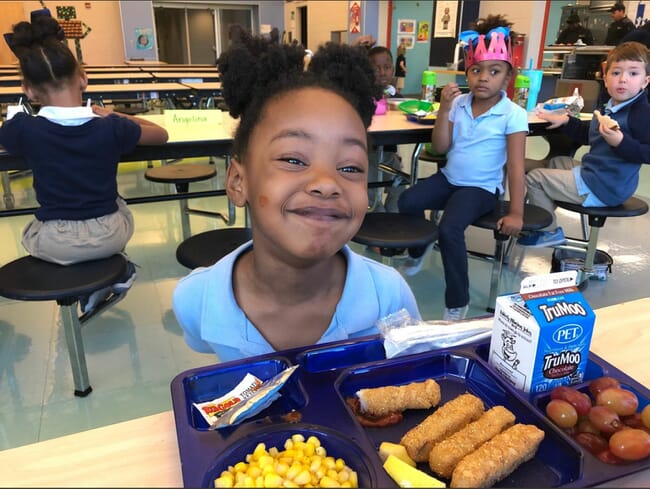
However, seafood makes up under 2 percent of all animal proteins that the USDA purchased for the school lunch program © Joe Urban, Greenville County Schools
Dietary guidelines suggest school-age children should eat 4-10 oz of seafood per week. However, a new report from the US Government Accountability Office shows this target is not even close to being met.
The report, National School Lunch Program: USDA Could Enhance Assistance to States and Schools in Providing Seafood to Students, found that:
- The US Department of Agriculture (USDA) purchased about 3 oz. of seafood per student per year in FYs 2014-19, for the National School Lunch program
- Seafood made up just 1-2 percent of all animal proteins that USDA purchased for the program (about 3 oz per student per year) in FYs 2014-19.
The US Department of Agriculture’s National School Lunch Program provides healthy meals to millions of kids from low-income households. However, the paucity of fish caused the Seafood Nutrition Partnership to comment in a press release:
“We as a nation should be shocked and alarmed by the huge disparity between our nation’s nutrition guidelines and policies and how it is actually implemented in our national school nutrition programs.
“What we eat matters for our health and the health of our students. All school foodservice decision makers and providers should read this report carefully and with urgency."
Seafood Nutrition Partnership and partners are now eager to work with the USDA and NOAA to develop actionable plans as recommended by the US GAO report GAO-23-105179 on the National School Lunch Program.



